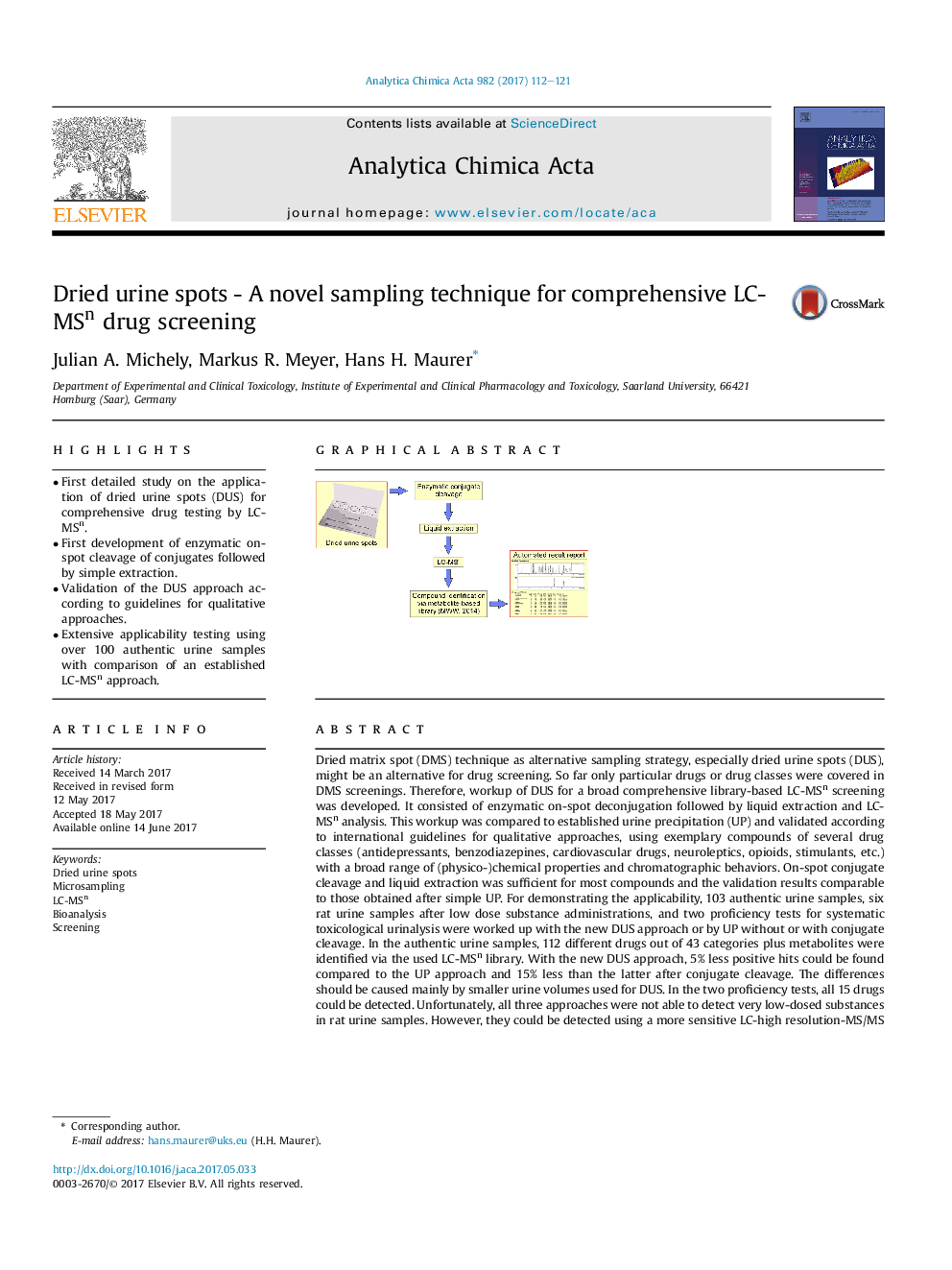| Article ID | Journal | Published Year | Pages | File Type |
|---|---|---|---|---|
| 5130856 | Analytica Chimica Acta | 2017 | 10 Pages |
â¢First detailed study on the application of dried urine spots (DUS) for comprehensive drug testing by LC-MSn.â¢First development of enzymatic on-spot cleavage of conjugates followed by simple extraction.â¢Validation of the DUS approach according to guidelines for qualitative approaches.â¢Extensive applicability testing using over 100 authentic urine samples with comparison of an established LC-MSn approach.
Dried matrix spot (DMS) technique as alternative sampling strategy, especially dried urine spots (DUS), might be an alternative for drug screening. So far only particular drugs or drug classes were covered in DMS screenings. Therefore, workup of DUS for a broad comprehensive library-based LC-MSn screening was developed. It consisted of enzymatic on-spot deconjugation followed by liquid extraction and LC-MSn analysis. This workup was compared to established urine precipitation (UP) and validated according to international guidelines for qualitative approaches, using exemplary compounds of several drug classes (antidepressants, benzodiazepines, cardiovascular drugs, neuroleptics, opioids, stimulants, etc.) with a broad range of (physico-)chemical properties and chromatographic behaviors. On-spot conjugate cleavage and liquid extraction was sufficient for most compounds and the validation results comparable to those obtained after simple UP. For demonstrating the applicability, 103 authentic urine samples, six rat urine samples after low dose substance administrations, and two proficiency tests for systematic toxicological urinalysis were worked up with the new DUS approach or by UP without or with conjugate cleavage. In the authentic urine samples, 112 different drugs out of 43 categories plus metabolites were identified via the used LC-MSn library. With the new DUS approach, 5% less positive hits could be found compared to the UP approach and 15% less than the latter after conjugate cleavage. The differences should be caused mainly by smaller urine volumes used for DUS. In the two proficiency tests, all 15 drugs could be detected. Unfortunately, all three approaches were not able to detect very low-dosed substances in rat urine samples. However, they could be detected using a more sensitive LC-high resolution-MS/MS approach showing that the DUS workup was also suitable for those. In conclusion, DUS might be an alternative sampling technique for comprehensive drug testing or adherence monitoring.
Graphical abstractDownload high-res image (218KB)Download full-size image
